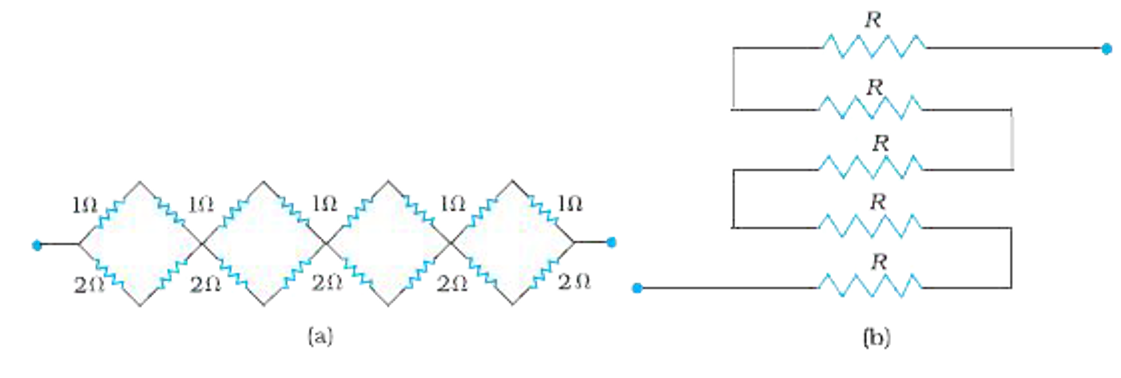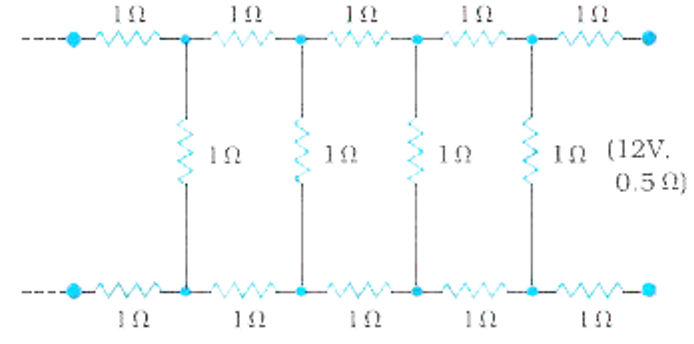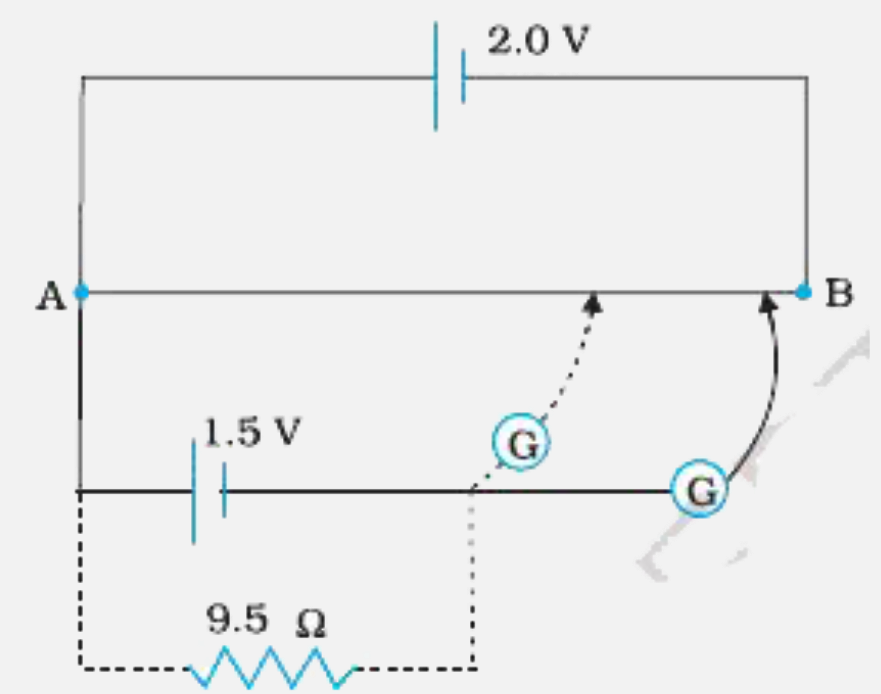Complete Solutions to ADDITIONAL EXERCISES of chapter CURRENT ELECTRICITY of Class 12 book with complete answers and questions
| Class 12 | PHYSICS |
| Chapter | CURRENT ELECTRICITY |
| NCERT TAMIL | ADDITIONAL EXERCISES |
| Number Of Questions | 9 |
| Academic Year | 2023-24 |
The earth's surface has a negative surface charge density of `10^(-9) Cm^(-2)` . The potential difference of 400 kV between the top of the atmosphere and the surface results (due to low conductivity of the lower atmosphere) in a current of only 1800 A over the entire globe. If there were no mechanism of sustaining atmosphereic electric field , how much time (roughly) would be required to neutralise the earth's surface ? (This never happens in practice because there is a mechanism to replenish electric charges namely the continual thunder storms and lightning in different parts of the globe). Radius of the earth `= 6.37 xx 10^(6) m`.
View SolutionSix lead-acid type of secondary cells each of emf `2.0` V and internal resistance `0.015Omega` are jouned in series to provide a supply to a resistance of `8.5Omega`. What are the current drawn from the supply and its terminal voltage ?
(b) A secondary cells after long use has an emf of `1-9` V and a large internal resistance of `380 Omega`. What maximum current can be drawn from the cell ? Could the cell drive the starting motor of a car ?
View SolutionTwo wires of equal length, one of aluminium and the other of copper have the same resistance. Which of the two wires is lighter ? Hence explain why aluminium wires are perferred for overhead power cables. Given For `AI. p_(1)=2.63xx10^(-8)Omega m`, For `Cu, p_(2)=1.72xx10^(-8)Omega m`. Relative density of `AI =2.7` of `Cu =8.9`.
View SolutionWhat conclusion can you draw from the follwing observation on a resistor made of alloy manganin ? `
 `
`
View SolutionAnswer the following questions : (a) A steady current flows in a metallic conductor of non-uniform cross-section. Explain which of these quantities is constant along the conductor : current, current density, electric field and drift speed ?
(b) Is Ohm's law universally applicable for all conducting elements ? If not, give examples of elements which do not obey Ohm's law.
(c) A low voltage supply from which one needs high currents must have low internal resistance, why ?
(d) A high tension `(HT)` supply of say `6 kV` must have a very large internal resistance. why ?
View SolutionChoose the correct alternatives :
(a) Alloys of metals usually have (greater/less) resistivity than that of their constituent metals.
(b) Alloys usually have much (lower/higher) temperature coefficients of resistance than pure metals.
(c ) The resistivity of the alloy manganin in (nearly independent of/ increase rapidly ) with increase of temperature.
(d) The resistivity of a typical insulator (e.g. amber) is greater than that of a metal by a factor of the order of `(10^(22) or 10^(3))`.
View Solution(a) Given n resistores each of resistance R. how will you combine them to get the (i) maximum (ii) minimum effective resistance?
(b) Given the resistances of `1 Omega, 2 Omega, 3 Omega.` how will be combine them to get an equivalent resistance of `(i) (11//3) Omega (ii) (11//5) Omega, (iii) 6 Omega, (iv) (6//11) Omega` ?
(c ) Determine the equivalent resistance of networks shown in

View SolutionDetermine the furrent drawn from a 12 V suly with internal resistacne `0.5Omega ` by the infinite network shown in Each rsistor has `1Omega` resistance.

View Solutionshow a `2.0V` potentiometer used for the determination of internal resistance of a `1.5V` cell. The balance point of the cell in open circuit is `76.3` cm. When a resistor of `9.5Omega` is used in the external circuit of the cell, the balance point shifts to `64.8 cm` length of the potentiometer wire. Determine the internal resistance of the cell.

View Solution
ADDITIONAL EXERCISES questions and complete solutions for chapter CURRENT ELECTRICITY of FULL MARKS PHYSICS(TAMIL) of Class 12